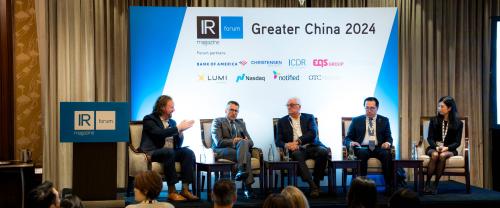Securities lawyer Michael Littenberg answers key questions on the new disclosure rule stemming from Dodd-Frank
The SEC’s new conflict minerals rule may be a direct consequence of Dodd-Frank, but it addresses human rights, not banking and finance.
It covers the use of tin, tantalum, tungsten and gold that may have been obtained from the Democratic Republic of Congo (DRC) and nine surrounding countries.
Revenue from sales have helped fund armed groups accused of human rights abuses in the region.
The materials are widely used in many types of manufacturing and the new rule will have a broad impact on public companies.
We spoke with Michael Littenberg, a partner with law firm Schulte Roth & Zabel and head of its public companies practice, about the new rule and the impact it will have on IR departments.
What is the new rule?
A public company has to file a Form SD with the SEC if any of its products contain conflict minerals and they’re necessary to the functioning or production of the products.
To the extent that you use conflict materials and they come from one of the 10 covered countries, you have enhanced due diligence obligations and have to file a conflict minerals report that generally has to be audited.
To the extent that any of your products use conflict minerals that benefit armed groups committing human rights abuses in the DRC, your filing has to contain information on your products that are not ‘DRC conflict-free’.
This rule is what people refer to as a ‘name and shame’ rule. It’s not intended to provide investors with information on your supply chain because it’s necessarily relevant to an investment decision.
It’s intended to drive changes in procurement. Not only do you file the Form SD, but you also have to put it on the internet and you have to put a link to your web disclosure as well as in the public filing.
The rule took effect on August 22 this year. The compliance period under the rule starts January 1, 2013. The first report under the rule doesn’t have to be filed until May 31, 2014, so public disclosure won’t come out for quite a long time.
But public companies can’t wait until 2014 to start thinking about the rule, because the disclosure period for that filing is all of 2013. And there will be many constituencies asking companies in advance of that about their supply chain policies.
How many companies will be affected?
These minerals have wide applicability across many different industries. The SEC estimates that approximately 6,000 public companies will have to file a Form SD. Of those 6,000, [the agency] estimates that about 75 percent, or 4,500, will have to prepare a conflict minerals report.
The rule applies to domestic companies, foreign private issuers that are public in the US, the emerging growth companies category created under the JOBS Act, and smaller reporting companies.
With one exception for smaller reporting companies, the rule applies to all companies equally without any separate phase-ins. To give a sense of the magnitude of the compliance obligations, by the SEC’s own estimates, the initial compliance costs for companies in total will be in billions of dollars, and the annual cost will be in the hundreds of millions. It will take different companies vastly different lengths of time to do the work.
How important is this issue for investors?
There are socially conscious investor groups that will care about it. The day the rule came out, some of the funds put out a letter that supported the new rule. If you were to look at the comments the SEC received, many were from SRI groups.
How are companies responding?
Companies are already putting together internal compliance teams to address the rule. Given the purpose of the rule and the focus on responsible sourcing by some investor constituencies, as well as by consumers and wholesale customers, this is an area gaining increasing attention. It’s not just a technical disclosure rule; it also needs to be factored into communications strategies by companies.
I’m advising clients that their internal conflict minerals working group include someone from IR. IR professionals will get questions on the rule and they will have to understand the extent to which their company may have compliance issues so they can understand what the communications challenges will be.
What communications issues are going to arise from the rule?
IR personnel have to think about the collateral communications issues. As an IR professional, you don’t want to get blindsided. Given that this is a ‘name and shame’ rule, it’s important that companies don’t underestimate the communications considerations.
This is a rule where not only will IR need to be part of the team, but there will also be overlapping interaction between IR, PR and CSR. There will need to be a lot of coordination – more than for most issues.
Are there any short-term challenges?
For a lot of companies, the issue will be the massive undertaking to get their arms around their supply chain. It may not even be possible for many companies to do all that work by the deadline.
There will be a period of a few years where you’ll see adverse disclosures because some companies won’t have had enough time to figure out or fix their supply chains.
One question is whether you say anything before mid-2014: do you put your supply chain policy online before that? What will investors’ perception of the policy be? How does your policy compare with that of competing companies? Do you include risk factor disclosure in your upcoming public filings?
And what, if anything, do you say if you get calls from investors asking you about your use of conflict minerals and your compliance strategy under the rule?










